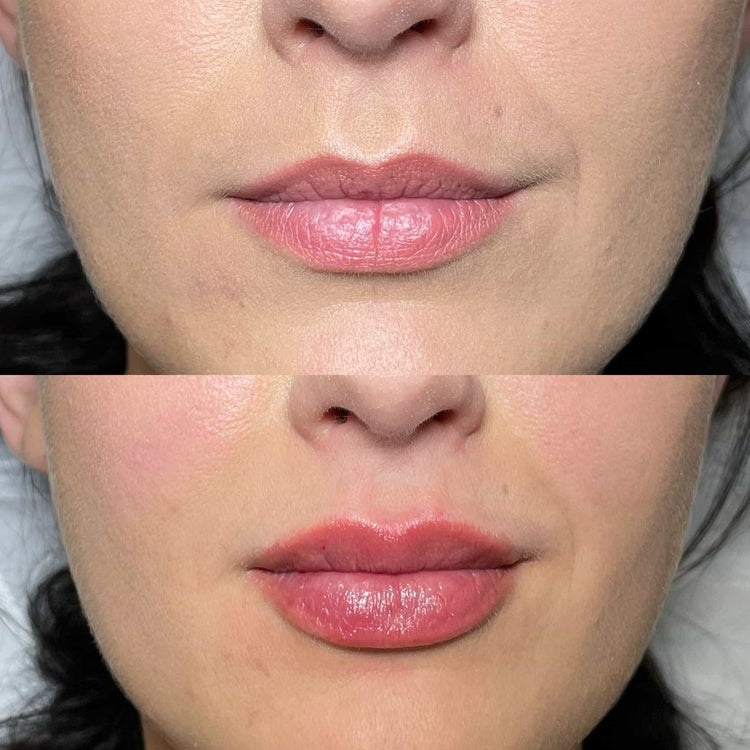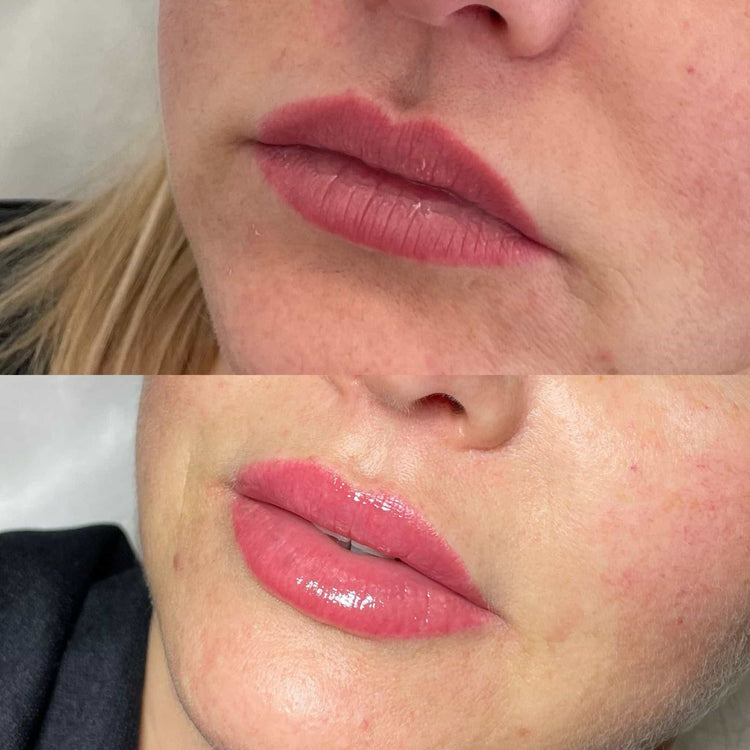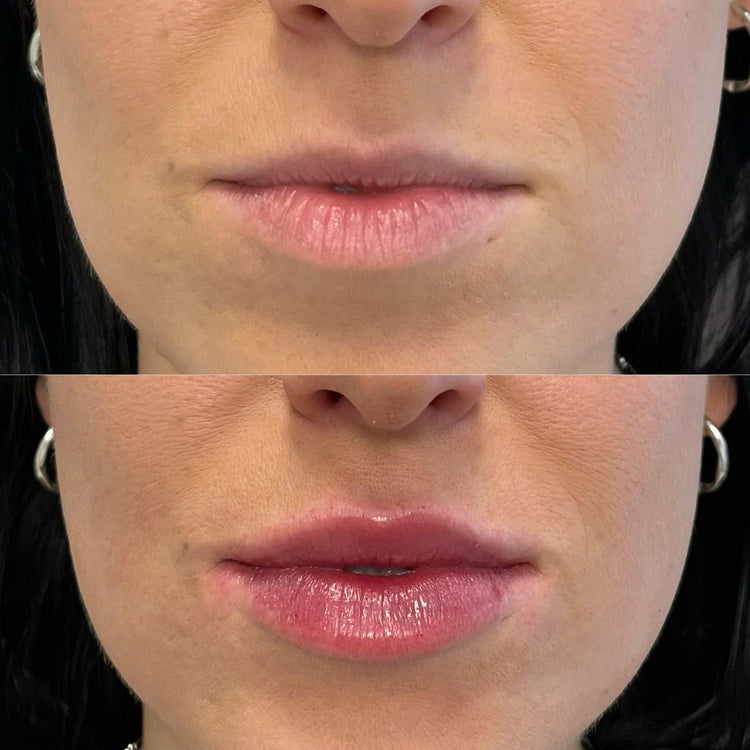Common Side Effects

Lip fillers, a popular cosmetic treatment, are designed to enhance lip volume and shape. While generally safe, it’s important to be aware of potential side effects that may occur after treatment.
Temporary Swelling
Temporary swelling is a common side effect of lip fillers. This swelling typically occurs immediately after the procedure and can last for several days to a week. The degree of swelling varies from person to person and depends on factors such as the amount of filler injected and individual sensitivity.
Redness and Bruising
Redness and bruising are also common side effects of lip fillers, often appearing soon after the injection. These typically subside within a few days to a week as well.
To minimize these side effects, it’s essential to follow your practitioner’s post-treatment instructions carefully. This may include applying ice packs, avoiding strenuous activity, and refraining from touching or rubbing the treated area.
Tenderness to the Touch
Another common side effect is tenderness to the touch. The lips may feel sore or sensitive for a few days following the procedure. This discomfort can be managed with over-the-counter pain relievers as recommended by your practitioner.
Itching
Itching is another potential side effect of lip fillers, and it can occur in some individuals after the treatment. The itching may be mild to moderate and usually resolves on its own within a few days.
Numbness
Numbness can also occur as a side effect of lip fillers, typically around the injection sites. This is due to the local anesthetic used during the procedure which can temporarily numb the area. The numbness usually subsides within a few hours to a day after treatment.
Serious Side Effects (Rare)
Though generally safe, like any medical procedure, lip filler injections carry potential risks. While most side effects are temporary and mild, some individuals may experience rare but serious complications. These can include allergic reactions, infection, or vascular occlusion, where the filler obstructs blood flow. It’s crucial to consult with a qualified practitioner, discuss your medical history thoroughly, and understand the potential risks before undergoing lip filler treatment.
Infection
Rare but serious side effects of lip fillers can occur, including allergic reactions that may involve itching, swelling, or difficulty breathing. Infection at the injection site is also a possibility and may require antibiotics.
Vascular occlusion, where the filler blocks blood flow to an area, is another serious potential complication. This can lead to tissue damage if not treated promptly.
Allergic Reaction
Rare but serious side effects of lip fillers can occur, including allergic reactions that may involve itching, swelling, or difficulty breathing.
Infection at the injection site is also a possibility and may require antibiotics.
Vascular occlusion, where the filler blocks blood flow to an area, is another serious potential complication. This can lead to tissue damage if not treated promptly.
Vascular Occlusion (Blood Vessel Blockage)
Rare but serious side effects of lip fillers can occur, including allergic reactions that may involve itching, swelling, or difficulty breathing.
Infection at the injection site is also a possibility and may require antibiotics.
Vascular occlusion, where the filler blocks blood flow to an area, is another serious potential complication. This can lead to tissue damage if not treated promptly.
Long-Term Side Effects
While lip fillers are generally safe, it’s important to be aware of the potential for both temporary and long-term side effects. Understanding these risks allows individuals to make informed decisions about cosmetic procedures.
Lumps or Nodules
While lip fillers are generally safe, it’s important to be aware of the potential for both temporary and long-term side effects. Understanding these risks allows individuals to make informed decisions about cosmetic procedures.
Long-term side effects from lip fillers are relatively rare but can occur. These may include:
- Lumps or nodules
- Asymmetry in lip shape
- Scarring
- Pigmentation changes
Asymmetry
Long-term side effects from lip fillers are relatively rare but can occur. These may include:
- Lumps or nodules
- Asymmetry in lip shape
- Scarring
- Pigmentation changes
Migration of Filler
Long-term side effects from lip fillers are relatively rare but can occur. These may include:
- Lumps or nodules
- Asymmetry in lip shape
- Scarring
- Pigmentation changes
Long-term side effects from lip fillers are relatively rare but can occur. These may include:
- Lumps or nodules
- Asymmetry in lip shape
- Scarring
- Pigmentation changes

Migration of filler is another potential long-term complication. This occurs when the filler moves from its initial injection site to other areas, potentially causing lumps or unevenness.
Minimizing Risks
Lip fillers offer a popular way to enhance lip volume and shape. However, it’s crucial to understand potential side effects associated with this cosmetic procedure. While many experience only temporary discomfort, certain risks exist that should be carefully considered before undergoing treatment.
Choosing a Qualified Practitioner

Minimizing risks when considering lip fillers starts with choosing a qualified practitioner. This is paramount in ensuring a safe and successful outcome.
- Look for practitioners who are licensed medical professionals, such as doctors or nurses, with specific training and experience in administering lip fillers.
- Check their credentials and ensure they have appropriate qualifications and certifications.
- Read online reviews and testimonials from previous patients to gauge their satisfaction and experience with the practitioner.
- Consult with multiple practitioners to compare their approaches, discuss your individual needs and goals, and ask any questions you may have.
Pre-Treatment Consultation and Examination
Pre-treatment consultations are essential for minimizing risks associated with lip fillers. During this consultation, a qualified practitioner will thoroughly assess your medical history, skin type, and desired outcome.
This discussion allows the practitioner to determine if lip fillers are appropriate for you and identify any potential contraindications or concerns.
A comprehensive physical examination of your lips will be conducted to evaluate their structure, symmetry, and existing conditions. This examination helps the practitioner determine the ideal type and amount of filler needed to achieve your desired results safely and effectively.
Aftercare Instructions
Aftercare instructions are crucial for minimizing risks and ensuring optimal results following lip filler treatment. Your practitioner will provide specific guidelines tailored to your individual needs, but here are some general recommendations:
- Apply ice packs to the treated area for 10-15 minutes at a time, several times a day, to reduce swelling and discomfort.
- Avoid strenuous activities or exercise that may increase blood flow to the face.
- Refrain from touching, rubbing, or picking at the treated area to prevent irritation and infection.
- Use gentle skincare products specifically formulated for sensitive skin and avoid harsh chemicals or exfoliants.
- Do not apply makeup directly to the treated area for at least 24 hours.
- Avoid consuming alcohol or smoking, as these can interfere with healing and increase swelling.
- Stay hydrated by drinking plenty of water to aid in tissue repair.
- Follow your practitioner’s instructions regarding medications, such as pain relievers if needed.
It is essential to attend all follow-up appointments with your practitioner to monitor healing progress and address any concerns.
Experience lip injections like never before with Dr. Laura Geige at It’s Me & You Clinic
- Downturned Smile Treatment Near Thames Ditton, Surrey - September 24, 2025
- Hypnotism Fetish: Power And Suggestion In Erotic Play - September 23, 2025
- Dermal Fillers Near Dormansland, Surrey - September 22, 2025
